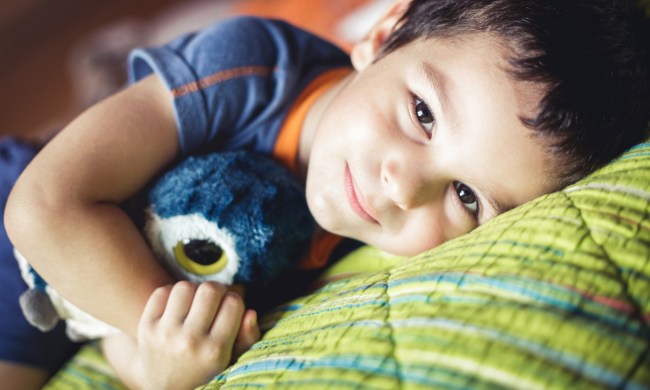Raising tweens can be extremely difficult for parents, especially since they carry mobile devices and use social media platforms like Snapchat to interact with friends. For as long as the internet has been in use, there have been nefarious folks lurking in its dark reaches, waiting for an opportunity to prey on the young or unassuming. Many parents have had conversations with their kids about how to safely use social media, especially when it comes to not giving out personal information or revealing too much about themselves to strangers.
What are some Snapchat dangers parents face when allowing their child to use the platform to talk to friends? Are there ways for parents to stay ahead in monitoring the use of the app? When should you consider removing Snapchat from your child’s phone? All these questions, and more, will be answered – in addition to a few suggestions on keeping an open line of communication between you your children.

Is Snapchat safe for kids?
While you can see some of your child’s Snapchat behavior if you are “friends” with them on the app, it also allows them to send private chats, which you can’t monitor unless you log into their personal account. Here are a few things you’ll want to pay close attention to before deciding whether to allow your tween to use Snapchat.
Snapchat can be addicting
To start things off, let’s get right down to the first of a few Snapchat dangers – it’s a total time-sucker. It can begin to take up a lot of time if you don’t monitor how long your child uses the app each day. Kids will – more often than not – want as much time as possible on it, leaving parents with the difficult task of setting boundaries and time limits for use.
If you find yourself wondering when your kiddo will ever come out of their room again, or if they simply seem to be spending more time than usual on their devices, “snapping” with their pals, it may be time to sit down with them and talk about the amount of it they seem to be spending online. Instilling a time limit, applying a timer, or even laying out a punishment if restrictions are not observed are a few basic ways to encourage your teen from over-indulging on Snapchat.

Anonymity isn’t always your friend
Having an anonymous presence online, especially on an app occupied by the younger generations, isn’t always a good thing. For reasons not entirely clear, Snapchat’s platform does not record the photos shared, nor the messages sent between users, allowing it to be used widely by dangerous adults, some predatory in nature. Because these users are free to share images and messages without the fear of being caught, predators can feel emboldened to act more freely. This makes anonymous-style social media platforms a big no-no for tweens and teens, especially without some sort of parental oversight.
Additionally, because of the lack of records on photos and messages, Snapchat can also be a place where teenagers can become entangled in the world of sexting. The act of sending and receiving nude or provocative images may define sexting. However, it does not elaborate enough on the kind of damage that can be done after a photo such as that is sent. Once a young person engages in the exchange of those types of images, those photos are then free to be exchanged without the sender’s permission. The sender may never know that their not-so-innocent picture was sent to other friends, friends of those friends, and the list goes on.
Because Snapchat’s photos and messages are not recorded or stored, should your child become a victim of a predator or involved in a sexting incident, no proof or evidence will be extracted to strengthen your case.

Bullying can happen on Snapchat
Not only is Snapchat’s lack of records possibly, and very dangerously, abetting sexual predators and other villainous individuals, but it’s also a possible breeding ground for cyberbullying. In the same way, it permits sexual predators to lurk in the shadows, Snapchat also provides a platform for tweens going through awkward and difficult phases in their lives to be bullied any time of the day or night, often without mercy or regard.
Snapmap is a little too close to home
Snapmap, a feature of Snapchat, allows users to see other users that are nearby, on a map-style background similar to Google or Apple Maps. While this could be a very convenient and fun way for adults to see their friends who are close by, for kids, knowing the location of other users – along with those users also knowing theirs – can be a doorway to possible sexual or physical assault, additional bullying, or worse.
Protecting your child from Snapchat dangers
While Snapchat does not offer much protection to its users, there are a few features that assist with finding out if photos are being misused, and a few safeguards the company put into place:
- If a user screenshots a photo sent to them, the sender is notified.
- Children must be at least 13 years old to hold an account with Snapchat.
- If a child under 13 signs up and utilizes correct dates, they will be redirected to SnapKidz, a child-friendly platform where nothing can be saved or shared.
In order to help curb your tween’s urge to hop on the Snapchat train, consider having a heart-to-heart conversation about the level of trust involved with your decision, as well as the repercussions for breaking your rules of using it.
Having a clearly conversed list of the consequences, if rules are broken, can help build the trust needed to allow such a platform to exist on your child’s devices. While they are a fun and entertaining way to spend time, as parents of kids in the very early stages of young adulthood, you may want to choose to skip this app until your child is a little older and has the level of maturity needed to interact with others on the app.



